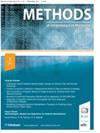危重儿童免疫受损状态的自动识别。
IF 1.8
4区 医学
Q3 COMPUTER SCIENCE, INFORMATION SYSTEMS
引用次数: 0
摘要
背景免疫功能低下宿主(ICH)的简单鉴定将允许根据宿主类型对培养结果进行分层。方法我们利用儿科重症监护室握手管理期间写的抗菌管理(ASP)团队笔记作为宿主状态的金标准;提取初级团队的临床笔记、就诊期间的医嘱、ASP文档之前记录的问题列表和账单诊断,以开发预测宿主状态的模型。我们根据诊断/药物计算了三个模型的性能,包括是否从临床笔记中进行自然语言处理。然后根据宿主状态对引起菌血症的病原体对常用经验性抗生素方案的易感性进行分层。结果我们从666名独特的患者中鉴定出844例抗微生物事件;160例(18.9%)被鉴定为脑出血。我们随机选择675个初始(80%)进行模型训练,169个初始(20%)进行测试。仅使用诊断和药物的基于规则的模型的敏感性为0.87(08.6-0.88),特异性为0.93(0.92-0.93),阳性预测值(PPV)为0.74(0.73-0.75)。在XGBoost模型中添加临床注释可提高特异性0.98(0.98-0.98)和PPV 0.9(0.88-0.91),但敏感性降低0.77(0.76-0.79)。在研究期间发现了77次菌血症发作,并创建了宿主特异性可视化。结论基于注释、诊断和药物的EHR表型以高特异性鉴定PICU中的ICH。本文章由计算机程序翻译,如有差异,请以英文原文为准。
Automated Identification of Immunocompromised Status in Critically Ill Children.
BACKGROUND
Easy identification of immunocompromised hosts (ICH) would allow for stratification of culture results based on host type.
METHODS
We utilized antimicrobial stewardship (ASP) team notes written during handshake stewardship rounds in the pediatric intensive care unit as the gold standard for host status; clinical notes from the primary team, medication orders during the encounter, problem list and billing diagnoses documented prior to the ASP documentation were extracted to develop models that predict host status. We calculated performance for three models based on diagnoses/medications, with and without natural language processing from clinical notes. The susceptibility of pathogens causing bacteremia to commonly used empiric antibiotic regimens was then stratified by host status.
RESULTS
We identified 844 antimicrobial episodes from 666 unique patients; 160 (18.9%) were identified as an ICH. We randomly selected 675 initiations (80%) for model training and 169 initiations (20%) for testing. A rule-based model using diagnoses and medications alone yielded sensitivity of 0.87 (08.6-0.88), specificity of 0.93 (0.92-0.93), and positive predictive value (PPV) of 0.74 (0.73-0.75). Adding clinical notes into XGBoost model led to improved specificity of 0.98 (0.98 - 0.98) and PPV of 0.9 (0.88 - 0.91), but with decreased sensitivity 0.77 (0.76 - 0.79). There were 77 bacteremia episodes during the study period identified and a host specific visualization was created.
CONCLUSIONS
An EHR phenotype based on notes, diagnoses and medications identifies ICH in the PICU with high specificity.
求助全文
通过发布文献求助,成功后即可免费获取论文全文。
去求助
来源期刊

Methods of Information in Medicine
医学-计算机:信息系统
CiteScore
3.70
自引率
11.80%
发文量
33
审稿时长
6-12 weeks
期刊介绍:
Good medicine and good healthcare demand good information. Since the journal''s founding in 1962, Methods of Information in Medicine has stressed the methodology and scientific fundamentals of organizing, representing and analyzing data, information and knowledge in biomedicine and health care. Covering publications in the fields of biomedical and health informatics, medical biometry, and epidemiology, the journal publishes original papers, reviews, reports, opinion papers, editorials, and letters to the editor. From time to time, the journal publishes articles on particular focus themes as part of a journal''s issue.
 求助内容:
求助内容: 应助结果提醒方式:
应助结果提醒方式:


